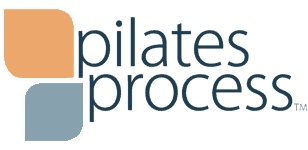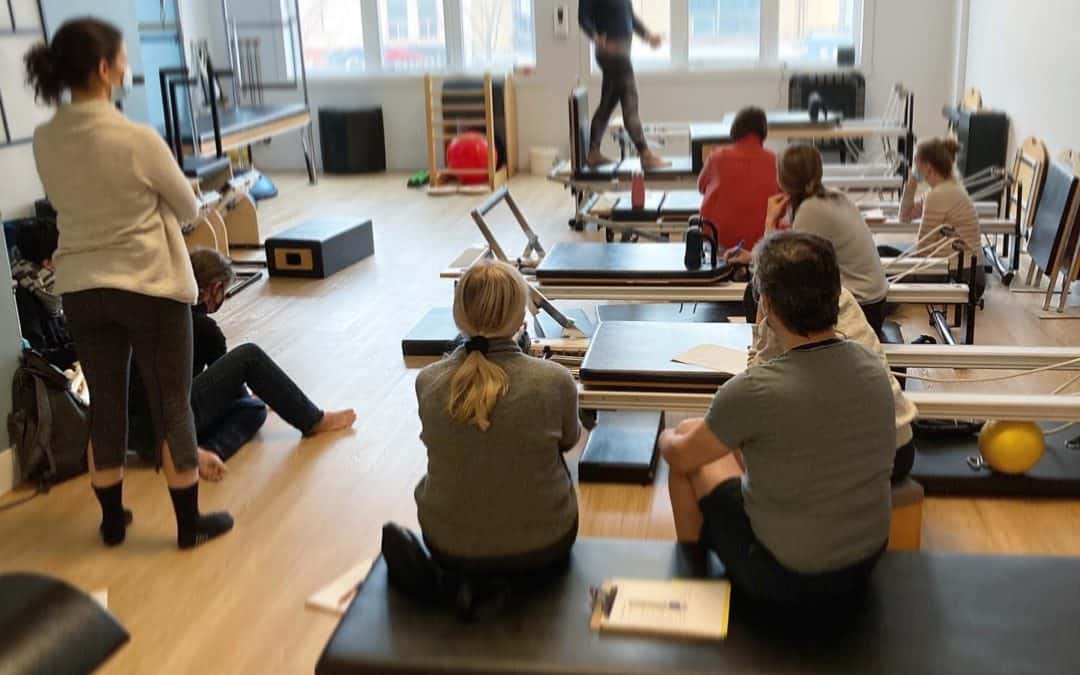It can seem like every Pilates teacher was a dancer. That they were already deeply immersed in movement before becoming a Pilates teacher. There is some truth to this. Pilates was a popular cross training choice amongst dancers decades before it became mainstream.
Another subset of trainees is made up of clinicians. Physiotherapists, osteopaths and massage therapists are increasingly seeking Pilates certification to improve their exercise repertoire in order to support their treatments and improve patient outcomes.
If you don’t happen to fit into one of these groups, it can be intimidating to jump into a teacher training course. Dancers memorize exercises with ease and clinicians aren’t starting anatomy from scratch. They seem to have such a strong advantage.
What if you just love Pilates? And want to share it? Can you become a successful teacher?
In a word, yes! We’ve had many students begin teacher training path with no obvious associated skills. This group includes lawyers, office workers, school teachers, at home moms and hairdressers. Many of these students have successfully transitioned to teaching. Others didn’t but that had little to do with their background. Teaching just didn’t turn out to be what they expected. More on that later.
A few things to consider.
- Is it harder without an associated background?
It can be. There can be significantly more work required on the front end of training with anatomy memorization and embodying the exercises. More review time is often required, especially early in the training period. This eventually evens out as training progresses, particularly once students move beyond the initial mat course. - You may have hidden talents.
I said that your background may have no obvious associated skills. That doesn’t mean you don’t have any applicable skills. High level communication, critical in teaching, is part of many jobs as are presentation skills, critical thinking, organizing and social emotional intelligence. These are all highly applicable to Pilates teaching. - Relating to clients.
Maybe it wasn’t easy for you to do Rolling Like a Ball or you had to earn your Teaser. Maybe you lack the flexibility for an Instagram-able Swan Dive. Often teachers with dance backgrounds over estimate what a “normal” body can do and what a reasonable starting workout is. Sometimes those who had to work to gain Pilates strength and flexibility are better at understanding what base level coordination and strength look like. - Passion.
If you love Pilates and it worked for you this passion can really be an appealing quality in a teacher. If you can keep that passion present in your teaching it can be a huge asset.
What does Certification actually mean?
Pilates is not regulated in North America. There is a no board certification, no 3rd party assessment ensuring a basic standard for Pilates teachers and because of this the word certification varies enormously. Some training programs require a minimal demonstration of proficiency and simply including a certificate as part of the training. Certification for showing up really.
The other end of the spectrum is where Pilates Process certification lives. Exams are complex and challenging. There is a written and a practical assessment with written personal feedback. Huge efforts are made by students and examiners to make the process educational, worthwhile and earned.
I’m certified. Now what?
Being a Pilates teacher can take many different forms: private or group sessions, working out of community centres or gyms, online or in person. It’s a very different experience teaching a private session in a studio compared to a group class in a gym. As students go through training they usually get a sense of their own preferences and strengths.
More often than not, small group sessions are an easier way to begin teaching. Working up to full time teaching (defined as about 25-30 hours per week) is not a realistic goal for most people. At least initially. Teaching beyond 15 hours weekly takes a certain type of stamina that can develop over time but is overwhelming at first. The constant focus, adapting and multi tasking inherent in teaching is challenging.
After a few months, it gets easier to expand the types of classes, levels and environments that you’re comfortable teaching in.
Teaching Pilates is not doing Pilates.
Sometimes people dive into training with a plan of quitting their current job and becoming a full time Pilates instructor and it just doesn’t pan out. In some cases the drive to become a Pilates teacher was misguided from the get go and the desire to get away from a stressful job was a stronger driving force than embracing Pilates.
It’s possible to love doing Pilates and hate teaching. Successful teaching puts you in a state of giving above all else. Of sharing your knowledge to guide people towards all of the strengthening, mobilizing benefits of Pilates and exercise in general.
If you decide to take teacher training this is my advice. Jump fully in and immerse yourself in the physicality, in owning the increased knowledge about the body and movement and in the messy process of early teaching. Don’t worry about what you’ll do with the certification later on. Wait til you get there.
Once certified try to find an environment where you have a mentor, a support system. So much learning happens in the months following certification. Even at our Toronto studio where most teachers have over a decade of experience, we alll appreciate the collective knowledge and support of working in a group where we all learn from each other.
After over 20 years of teaching I can’t imagine liking it more.
Laura Helsel Gauthier
Pilates Process director
Presenter, Writer, Teacher

